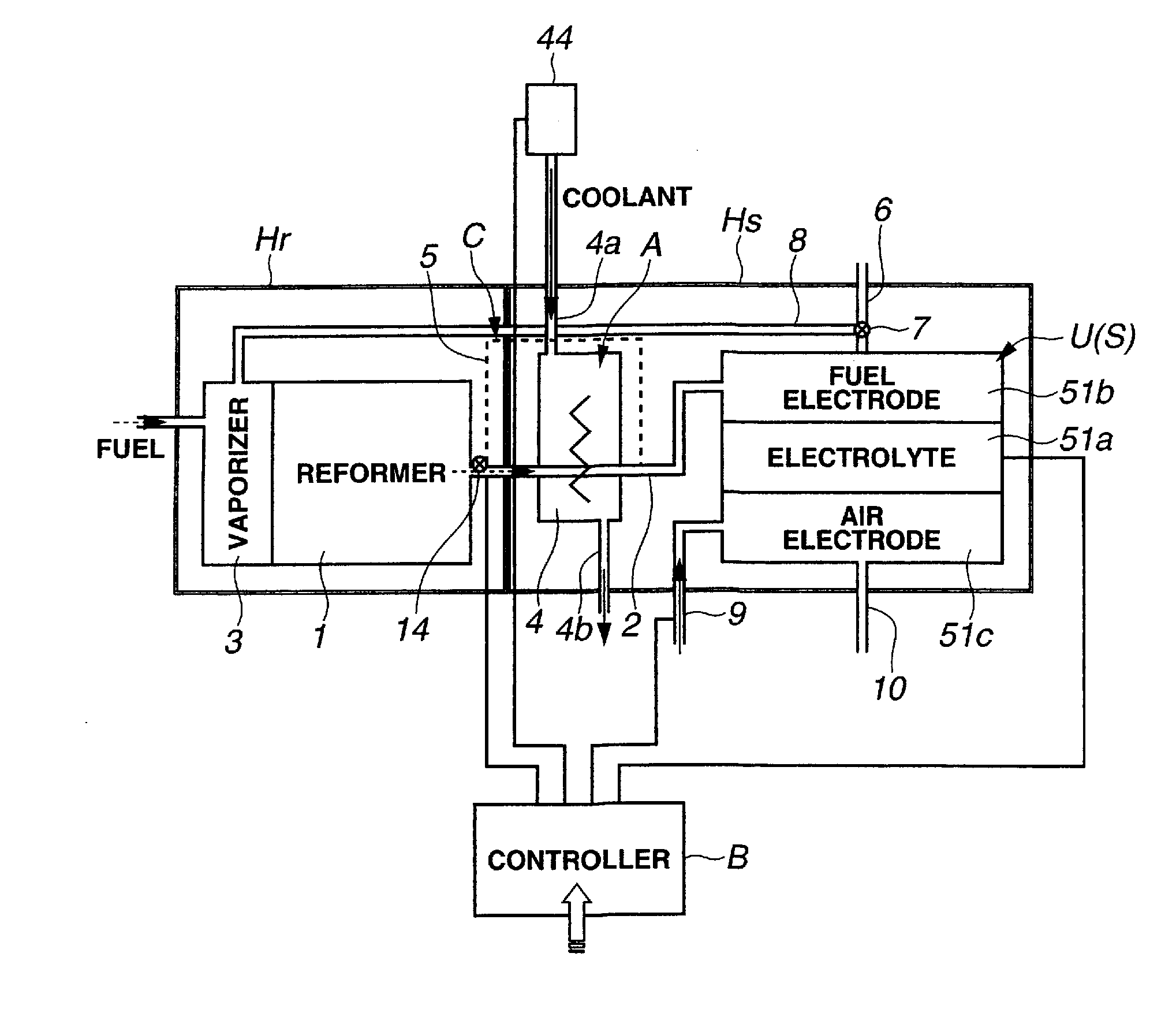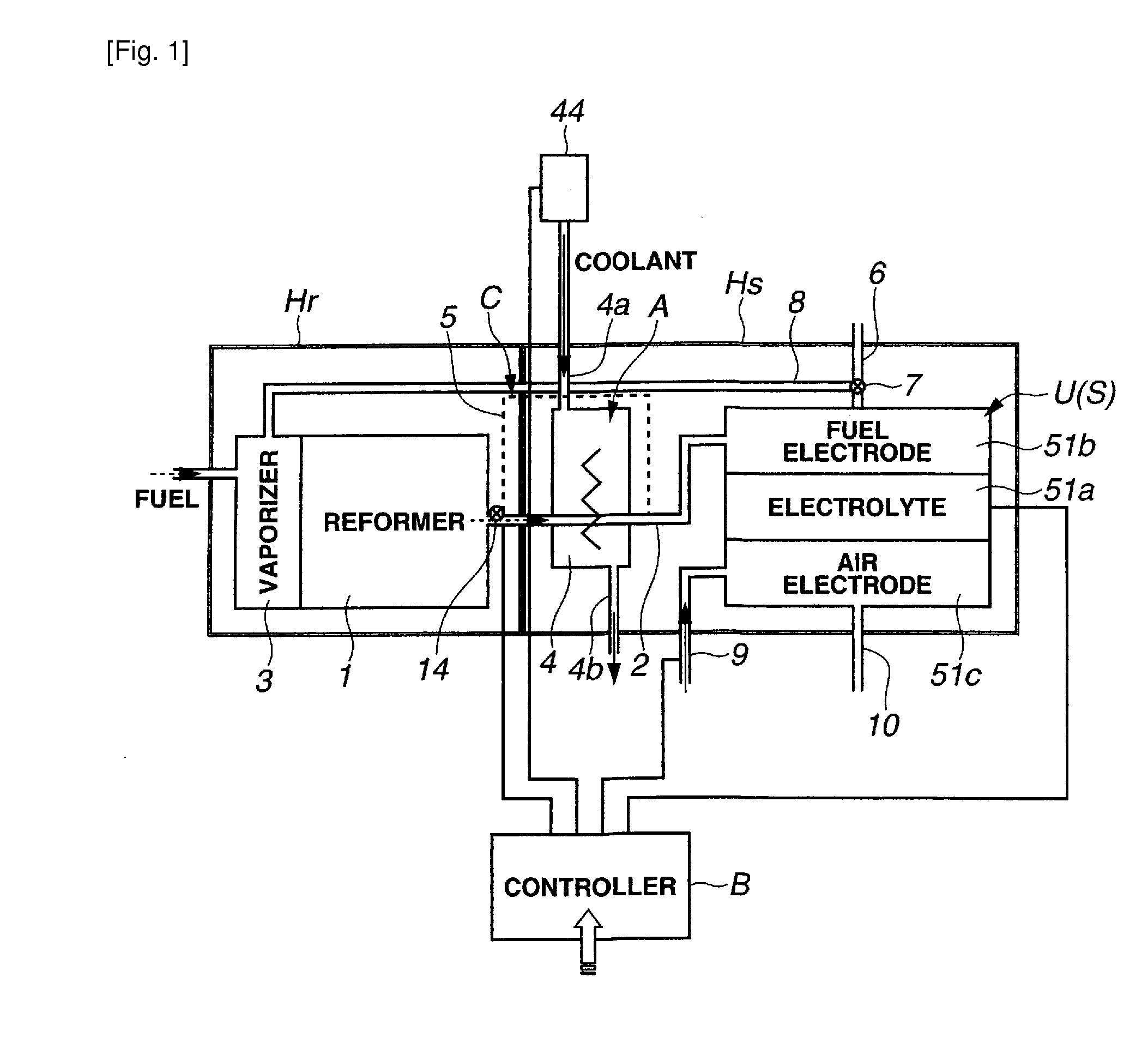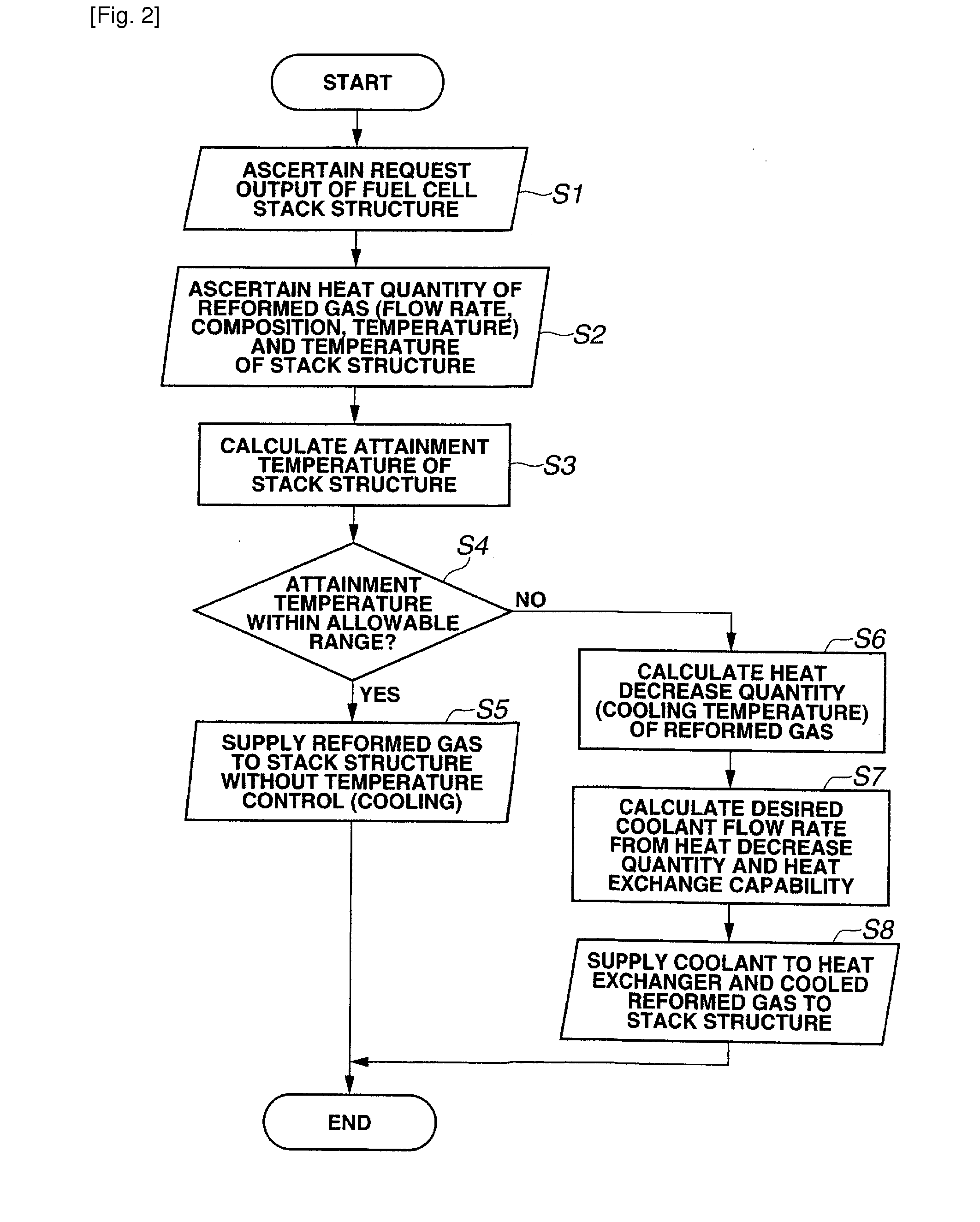Solid electrolyte fuel cell system
- Summary
- Abstract
- Description
- Claims
- Application Information
AI Technical Summary
Benefits of technology
Problems solved by technology
Method used
Image
Examples
first embodiment
[0022]FIG. 1 shows a solid electrolyte fuel cell system or apparatus according to the present invention. The fuel cell system shown in FIG. 1 includes a reformer 1 for producing a reformed gas, and a stack structure S including a stack of cell units U. Reformer 1 of this example produces a hydrogen-rich reformed gas from fuel, oxygen and water. Each of the cell units U receives the supply of the reformed gas and air, and produces electricity.
[0023]The fuel cell system of FIG. 1 further includes a reformed gas cooler A which can serve as a component of a reformed gas cooling means for cooling the reformed gas supplied from reformer 1 to stack structure S, and a temperature control section which can serve as a component of a temperature controlling means for controlling the temperature of stack structure S. The temperature control section of this embodiment is configured to control the operation of the reformed gas cooler A. According to the first embodiment, the temperature control s...
second embodiment
[0060]In the second embodiment, the reformer 1 (together with vaporizer 3), the heat exchanger 4 and the stack structure S are separately encased in heat insulating containers Hr, Hh and Hs. This insulating container structure composed of the container Hr enclosing reformer 1, the container Hh enclosing heat exchanger 4, and the container Hs enclosing stack structure S can insulate the reformer 1, heat exchanger 4 and stack structure S from one another thermally, and restrains the heat transfer or the exchange of heat therebetween, except the heat transfer through the reformed gas. By doing so, this insulating container structure composed of the separate insulating containers Hr, Hh and Hs can improve the effect of the control of the temperature of stack structure S by the control of heat quantity of the reformed gas, thereby stabilize the temperature of stack structure S, and further improve the controllability or following characteristic to the load varying operation (as in a vehi...
third embodiment
[0073]FIG. 6 shows a control process performed by the temperature controller B in the solid electrolyte fuel cell system according to the Steps S1˜s4 and S11˜S15 are substantially identical to the steps S1˜S4 and S11˜S15 of FIG. 4, so that the explanation is omitted.
[0074]When the attainment temperature of stack structure S exceeds the allowable range, and the answer of S4 is NO, then controller B proceeds from S4 through S12, S13 and S14, to a step S21. At S21, controller B ascertains the sensed reformed gas temperature of the reformed gas after the heat exchange sensed by temperature sensor 15 an the sensed air temperature of the air (generating air) after the heat exchange sensed by temperature sensor 16. Then, at a next step S22, controller B examines whether a reformed gas temperature difference between the sensed reformed gas temperature and an estimated reformed gas temperature is lower than or equal to a first predetermined value, and whether an air temperature difference b...
PUM
 Login to View More
Login to View More Abstract
Description
Claims
Application Information
 Login to View More
Login to View More - R&D
- Intellectual Property
- Life Sciences
- Materials
- Tech Scout
- Unparalleled Data Quality
- Higher Quality Content
- 60% Fewer Hallucinations
Browse by: Latest US Patents, China's latest patents, Technical Efficacy Thesaurus, Application Domain, Technology Topic, Popular Technical Reports.
© 2025 PatSnap. All rights reserved.Legal|Privacy policy|Modern Slavery Act Transparency Statement|Sitemap|About US| Contact US: help@patsnap.com



